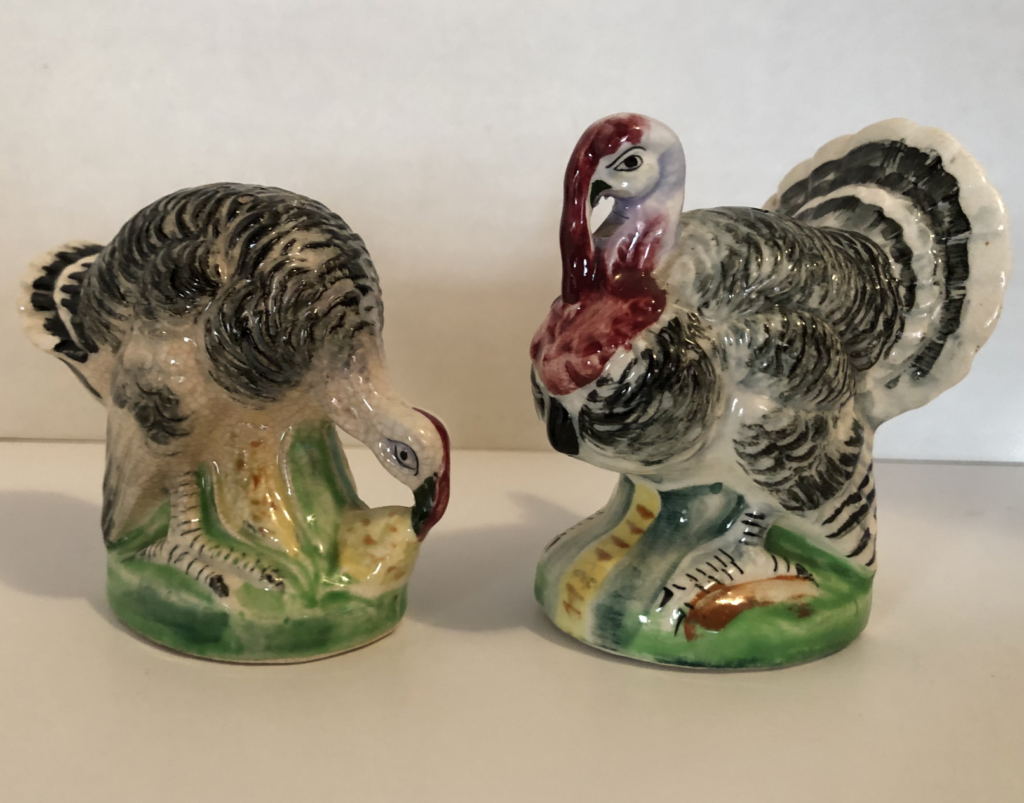
By Dorri Partain
This poultry pair is ready to offer up seasonings for the season.
With tom turkey offering salt, and his hen companion offering pepper, they make a perfect addition to any Thanksgiving table. Like many ceramic shaker sets manufactured during the post-World War II period, they were products of the many factories emerging in a rebuilt Japanese economy.
While salt has been used for centuries as not only a food flavor enhancer, but a food preservative, pepper found its way to the table via the spice trade developed during the Middle Ages, and was considered a luxury item reserved for the wealthy.
Serving salt at the table prior to the 20th Century involved small bowls called salt cellars, which during the Victorian period took on all shapes of elaborate designs, being formed from glass, porcelain or durable metals. Users could use their fingers to add a pinch or use a small decorative spoon to add the desired amount.
The Morton Salt Company was the first to add magnesium carbonate, an anti-caking agent, to salt so that it would flow freely in 1911. Once salt could be poured in any weather condition, it opened the door to manufacturers to add small holes to the top of ceramic figurines and create a new decorative and collectable item, the salt and pepper shaker set.
Sometimes the designs match, while others may compliment each other – but the number of holes in the top denotes which is which – fewer holes for salt than pepper.
The huge variety of styles and mediums, as well as those created as souvenirs, make shakers sets a collectable item. The Museum of Salt and Pepper Shakers in Gatlinburg, Tenn., opened in 2005 and exhibits over 20,000 different sets of shakers.
















